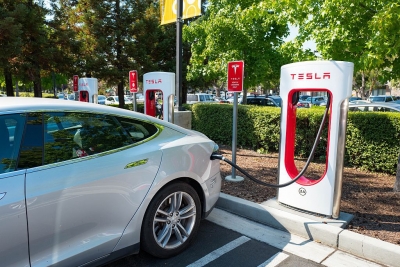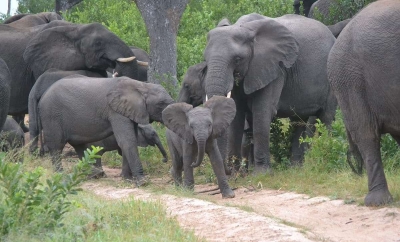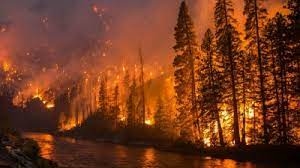
Many state governments in India have announced plans to give e-mobility a push. While Karnataka made legal provisions for operating electric bike taxis, Maharashtra, Gujarat and Rajasthan announced financial incentives and schemes for purchasing e-vehicles and setting up charging stations. Earlier this year, the Delhi government launched the 'Switch Delhi' campaign to focus on adoption of electric three-wheelers, including e-autos, e-rickshaws, and e-carts.
The governments seem to have two dominant objectives - to control pollution and take the lead in an emerging industry. With fuel prices skyrocketing every day, people might look at e-vehicles as an affordable alternative to conventional vehicles.
E-vehicles are gaining popularity around the world. Many countries have pledged to become carbon neutral within a decade or two. Electric vehicles are seen as a way to reduce carbon emission from transportation. According to researchers at the International Monetary Fund and Georgetown University, more than 90% of all passenger vehicles in the U.S., Canada, Europe and other rich countries could be electric by 2040. If this becomes a reality, oil use will come down by 21 million barrels a day and CO2 emissions will be cut by 3.2 billion tons a year, they say.
What are electric vehicles?
Electric vehicles, such as e-cars, e-rickshaws and e-bikes, use electric motors for propulsion. EVs also include rail vehicles, surface and underwater vessels, electric aircraft and electric spacecraft. They are powered by rechargeable batteries installed in them. They can be charged at charging stations (like we do for conventional vehicles at petrol bunks) established at various places.
Lithium-ion batteries are predominantly used in electric vehicles. These batteries have become the industry standard over the last two decades of EV development. New graphene-based technologies that enable fast charging (say, in 15 seconds) are being tested. These are expected to supplement, not replace, traditional EV batteries.
How can the electric vehicles be charged?
The vehicles can be charged the same way one charges a cellphone. It can be done at home or at a public charging station. The time taken to charge EVS depends on its drivetrain capacity. There are two types of charging available for electric vehicles - Normal and Fast charge.
Normal charge: Depending on the vehicle and battery type and size, the charging duration can range between 8 and 14 hours. Fast charge: Again depending on the vehicle and model, this battery can be fully charged in a minimum of one hour.
How long does the battery last?
This too depends on the vehicle and battery type and how well the user maintains it. Like your phone battery, the one in your car will degrade over time.
In India, the cost of charging depends on the average cost of supply set by each State. The power ministry last year said that the tariff for a public charging station should not be more than 15% of the state's average cost of supply. On average, it will cost about Rs 40 to fully charge an all-electric car or a scooter.
When was the electric vehicle invented?
Electric vehicle is a not new concept. Professor Sibrandus Stratingh of University of Groningen, the Netherlands, built a small-scale electric car as early as 1835. The first mass-produced electric vehicles appeared in the U.S. in the early 1900s. Due to the limitations of storage batteries at that time, electric cars did not gain much popularity. However, electric trains did, because overhead lines met their electricity requirement. Electric train became common by the early 20th Century.
Interest in electric cars revived in the 1990s with mass production by General Motors, Chrysler, Ford, GM, Honda, Nissan and Toyota. But it soon died down due to the success of the conventional automobiles. It was the 21st Century that saw a resurgence of EVS, thanks to technical advancements and increased focus on renewable energy.
What are the benefits of EVs?
No emission: Electric cars do not emit toxic gases or smoke, while conventional vehicles that run on non-renewable fossil fuels such as petrol and diesel emit greenhouse gases. Electric vehicles get their power from a wide range of sources, including nuclear power, tidal power, solar power, and wind power, and not just from coal. Hence EVs are considered to have the potential to combat global warming. The vehicles are also much quieter and do not cause noise pollution.
Cost-effective: Though electric cars are more expensive than their fuel-powered counterparts, they are cost-effective in the long run. People can save on the fuel cost. Electric cars do not require much maintenance. Electric cars run on electrically powered engines, and hence there is no need to lubricate the engines with oil. Conventional vehicles consume fuel while idling, whereas energy is not wasted in the case of e-vehicles.
Prolonged lifespan: If maintained well, battery would be the only part that would require changing.
What are the shortcomings?
Not truly ecofriendly: Most countries generate electricity from coal and EVS use this electricity to charge the batteries. Hence, in most cases, energy to EVs indirectly come from fossil fuel, which is a major cause of global warming. Also, manufacturing an electric vehicle generates more carbon emissions than building a conventional car.
Fewer fuel stations: Not many places have electric fuelling stations in India. Short driving range and speed: Electric cars are limited by range and speed. They are not ideal for long journeys as of now, although this is expected to improve in the future.
Longer recharge time: While it takes a couple of minutes to fuel your petrol- or diesel-powered car, an electric car takes a few hours to get fully charged.
Power shortage: Electric cars may not be suitable for cities that face acute power shortage. Consumption of more power would hamper the city's daily power needs.
Danger of e-waste: The rise of electric cars could leave us with a huge pile-up of battery waste on our landfills.
What should governments do?
- Governments should focus on electricity generation from renewable sources so as to realise the environmental benefit of electrical vehicles.
- Bring down the cost of e-vehicles to make them affordable. This is being done by a few States in India.
- Increase provision for charging points at public places and workplace.
- Find a solution for the safe disposal and recycling of worn-out lithium-ion batteries.
Picture Credit : Google



